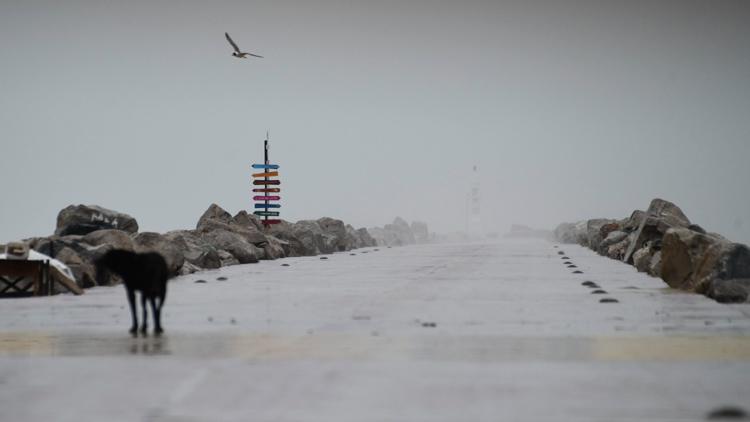TAMPICO ALTAMIRA, Tampico — Tropical Storm Alberto, the season’s first named storm, weakened Thursday as it moved inland over northeast Mexico after bringing heavy rains to parts of the parched region and leaving at least three dead.
The storm was weakening rapidly over land and was downgraded to a tropical depression by the U.S. National Hurricane Center with maximum sustained winds of 35 mph (55 kmh). Coastal storm watches and warnings in Mexico were lifted as Alberto moved west at 18 mph (30 kmh).
But forecasters said heavy rain amounting to several inches was still expected inland in Mexico’s Tamaulipas, Nuevo Leon and Coahuila states. South Texas was forecast to see diminishing rain Thursday.
Immediately after it moved ashore in Tampico, there was initial disappointment at the meager amount of rain that fell. Showers had been sporadic through the early morning with the sun even breaking through at times.
“We had hoped that it would come because water is so needed here, but at far as I can tell it went somewhere else,” said Tampico resident Marta Alicia Hernández.
The rain that Tampico had hoped for may still be coming from some of the large system's outer bands. There was heavy rain reported inland in the neighboring state of Nuevo Leon.
There, civil protection authorities reported three deaths linked to Alberto’s rains. They said one man died in the La Silla river in the city of Monterrey, the state capital, and that two minors died from electric shocks in the municipality of Allende. Local media reported that the minors were riding a bicycle in the rain.
Nuevo Leon Gov. Samuel García wrote on his account on social media platform X that metro and public transportation services would be suspended in Monterrey from Wednesday night until midday Thursday when Alberto has passed.
Alberto had spurred tropical storm warnings covering most of the western Gulf of Mexico’s coastline from Texas to Veracruz. The storm made landfall with maximum sustained winds of 45 mph (75 kmh).
Schools were closed across Tamaulipas state where Alberto came ashore and would be through Friday. Shelters were prepared across the state to receive residents trying to escape high water.
As much as 5 inches (13 centimeters) to 10 inches (25 centimeters) of rain was expected in some parts of northeast Mexico and southern Texas, with even higher isolated totals possible, according to the hurricane center. Some higher locations in Mexico could see as much as 20 inches (50 centimeters) of rain, which could result in mudslides and flash flooding, especially in the states of Tamaulipas, Coahuila and Nuevo Leon.
Mexican authorities had downplayed the risk posed by Alberto and instead pinned their hopes on its ability to ease the parched region's water needs.
“The (wind) speeds are not such as to consider it a risk,” said Tamaulipas state Secretary of Hydrological Resources Raúl Quiroga Álvarez during a news conference late Wednesday. Instead, he suggested people greet Alberto happily. “This is what we’ve been waiting for for eight years in all of Tamaulipas.”
Much of Mexico has been suffering under severe drought, with northern Mexico especially hard hit. Quiroga noted that the state’s reservoirs were low and Mexico owed the United States a massive water debt in their shared use of the Rio Grande.
“This is a win-win event for Tamaulipas,” he said.
Alberto was bringing rains and flooding to the coast of Texas as well.
The U.S. National Weather Service said the main hazard for southern coastal Texas is flooding from excess rain. On Wednesday the NWS said there is “a high probability” of flash flooding in southern coastal Texas. Tornadoes or waterspouts are possible.
Areas along the Texas coast were seeing some road flooding and dangerous rip currents Wednesday, and waterspouts were spotted offshore.
In the village of Surfside Beach, a Texas city on a barrier island, storm surge early Thursday left behind some damaged roads and lots of debris, but “very little damage” to the mostly elevated structures, Mayor Gregg Bisso said.
The surge was receding by late morning and “you can almost get around now,” he said. Bisso said the island has a population of about 800 full-time residents with as many as 10,000 vacationers in the summer.
Tampico resident Octavio González was visibly disappointed in the little rain from Alberto.
“Very little water fell,” he said. “We're on this south side of Tamaulipas with a lot of drought. And the truth is we have a lot of hope for the rain.”



